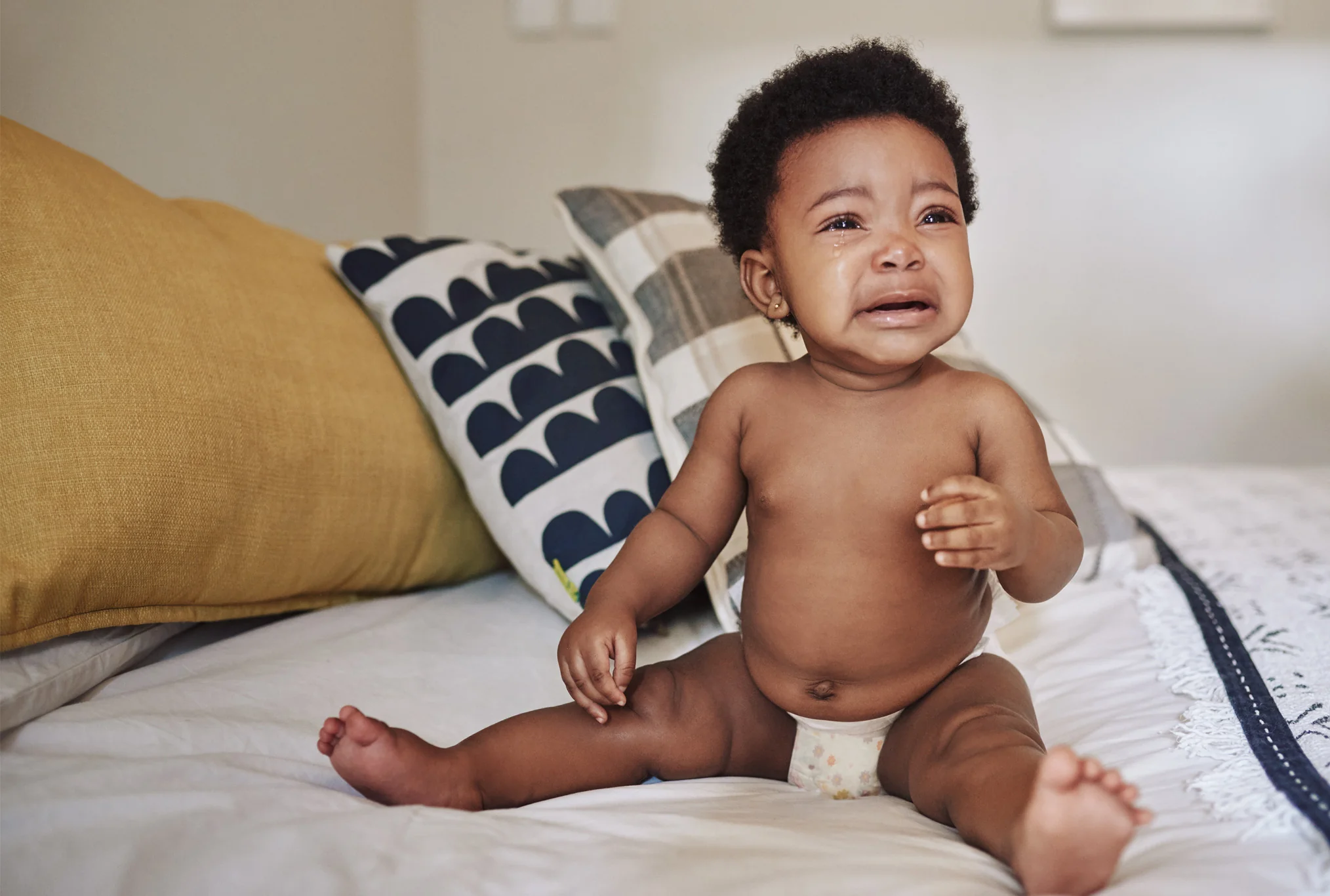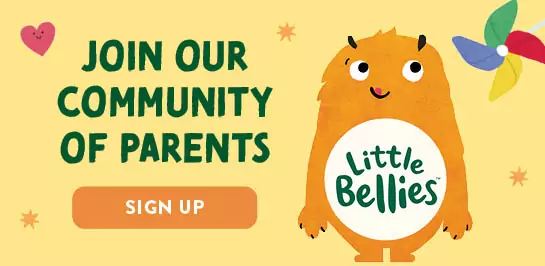How to Ease Separation Anxiety in Babies and Toddlers
Reading time:
Reading time:

By: Jessica D’Argenio Waller, MS, CNS, LDN
If your baby or toddler has ever cried and protested when you dropped them off at another caregiver’s, you know the pain and guilt that reaction can bring. It’s heart-wrenching, but rest assured that this phenomenon, known as separation anxiety, is developmentally appropriate.
Separation anxiety in babies tends to set in around 8 to 9 months, once your baby has developed the understanding of what’s familiar and what’s unfamiliar. Your little one has started to recognize that objects continue to exist even when they’re not visible, a developmental phenomenon called object permanence. When you’re out of sight, your baby will know you’re somewhere else without them, which is somewhat distressing. The result? Clinginess and outbursts when separated because they fear their source of safety and comfort might vanish altogether.
This separation anxiety tends to peak between 10 months and 18 months and then fades during the last half of the second year, which means that it’s common in toddlers, too. But as your child gets older, memories will help them realize that when you leave, you always come back.
While it can be worrying and stressful, separation anxiety in babies and toddlers also reflects a strong attachment to you, their primary caregiver, plus a solid social awareness. The crying when you leave will ease over time, but here are some suggestions to soothe their fears.
Starting around 8 or 9 months, your baby may begin to understand that you still exist even when they can’t see you. So now, when you leave the room or drop them off at daycare, they can understand that you’re going somewhere else—without them. This can be distressing for your little one. But if you can start to anticipate the situations where they might get worried, it can help both of you stay calm. Those situations may include:
Leaving baby’s sight: It’s common for babies to get upset when parents leave the room. Being unable to see a favorite face can be worrisome, but tell them in a calm voice that you’ll be right back.
Bedtime separations: Some children may resist sleep or become inconsolable if they try to exit at bedtime without the proper sleep associations in place. Here’s where setting up a consistent bedtime routine can really help because they know what to expect.
Meeting new faces: Unfamiliar people like babysitters, relatives you don’t see frequently, or strangers can set off a baby’s internal alarm system. Ease into new introductions, staying with your little one as long as you can to help them understand that they’re in safe hands.
Going to new places: Just like unfamiliar faces, new environments cause unease because their routine is disrupted, and they may not know what to expect. Bring along a familiar item, like their favorite toy or snack (try Little Bellies Organic Mango Pick-Me Sticks), to help them settle in.
As their parent, you play a major role in helping your baby overcome separation fears. There are several ways to help them and quell those clingy phases:
While most babies outgrow separation anxiety, if your bub is still having intense reactions after 18 months, it may signal issues like attachment disorders or even a possible developmental delay.
Sometimes, stressful life changes like moving house or the arrival of a new sibling can trigger attachment fears and cause a new round of separation anxiety. Return to your routines and comfort and assure your child as much as possible.
If your typical soothing techniques don’t seem effective, or if their worries interfere significantly with daily life, speak to your child’s pediatrician to look into any underlying factors that could benefit from early intervention.
It’s important not to underestimate the emotional toll that separation anxiety in babies and toddlers can trigger in adults. As their primary caregiver, it’s so hard to see them upset, especially when you know that what will soothe them the most is your presence.
While it’s natural to feel guilty or stressed when leaving your child, remember that learning to cope with separation is an important developmental milestone. Here are some strategies to help both you and your baby manage separation anxiety:
Remember, it’s completely OK to have mixed feelings about separation. By taking care of your own emotional needs, you’re better equipped to support your child through this challenging but important phase of development.
Absolutely—it’s a testament to the strong bond you share. Babies form deep emotional connections, and when separated, they may express their feelings through tears or fussiness.
Q. Why does my baby cry when I leave the room?
Your departure sets off a fear of being alone, causing your baby to seek comfort. It’s a normal response to their developing understanding of object permanence.
Q. Do all babies experience separation anxiety?
Yes, most babies and toddlers go through this phase. It’s a typical part of their emotional and cognitive development.
Q. When does separation anxiety start in babies? How long does it last?
Typically, separation anxiety in babies starts around 8 or 9 months and can peak between 10 to 18 months. While the timing varies, understanding that it’s a temporary phase can bring comfort.
Q. What can make separation anxiety worse?
Inconsistency in routines, abrupt departures, and displaying frustration or anxiety yourself can exacerbate your baby’s separation anxiety. Setting up routines and sticking to them can help both you and your child know what to expect and better predict outcomes.
Keep in mind that separation anxiety is a normal part of your child’s development, and it’s a shared experience among many parents. While it can be hard to navigate, know that your steadiness as a caregiver is what will help them trust in their secure attachment and own abilities to self-soothe. With patience, consistency, and love, you’ll both grow through this phase, emerging with a stronger emotional bond and resilience.

Get the latest news on parenting tips, food play hacks, promotions and giveaways!
Subscribe Now